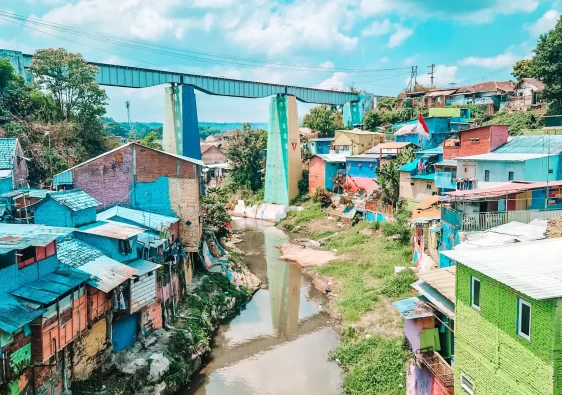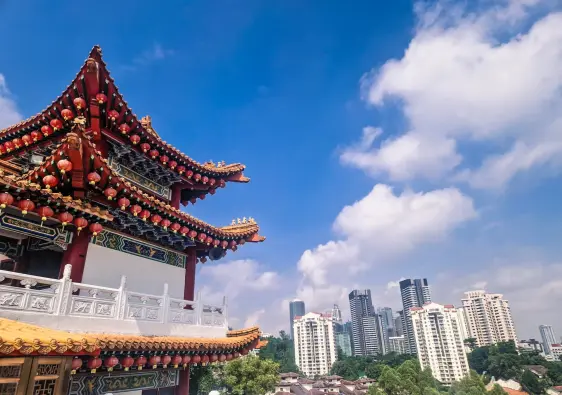If you’re wondering how to visit Mount Fansipan, you’re in the right place. Towering at 3,147 meters, Mount Fansipan is the highest peak in Indochina and one of Vietnam’s most spectacular destinations. Thanks to the impressive Fansipan Cable Car, reaching the summit is now possible for almost anyone—no grueling multi-day trek required! But visiting this breathtaking mountain isn’t just about the views; it’s a journey through engineering marvels, cultural landmarks, and ever-changing weather conditions. In this guide, I’ll walk you through everything you need to know, from the best time to visit to ticketing options, so you can make the most of your trip to the Roof of Indochina.
Just so you know, this post contains affiliate links. If you book a tour, hotel, or buy something through one of these links, I may earn a small commission—at no extra cost to you. It helps me keep this blog running and full of travel tips. Thanks for the support!
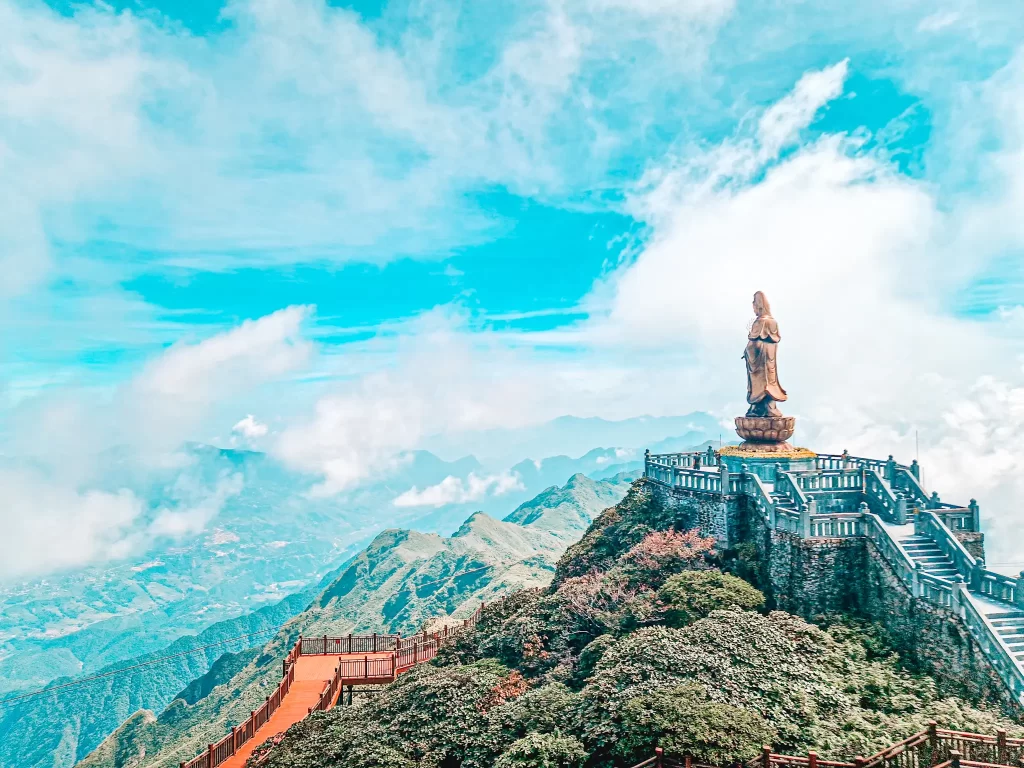
Is Mount Fansipan worth visiting
Mount Fansipan is absolutely the highlight of any trip to Sapa. As the highest mountain in Indochina, Mount Fansipan was once accessible only by a challenging trek. However, thanks to the impressive engineering of the Fansipan Cable Car, visitors can now reach the summit with little to no climbing. This is a unique opportunity to visit a mountain that’s 3147m high without trekking!
The views from the summit are incredible, and there are also temples and giant statues between the cable car station and the summit, which are worth visiting in their own right as they’re also amazing structures.
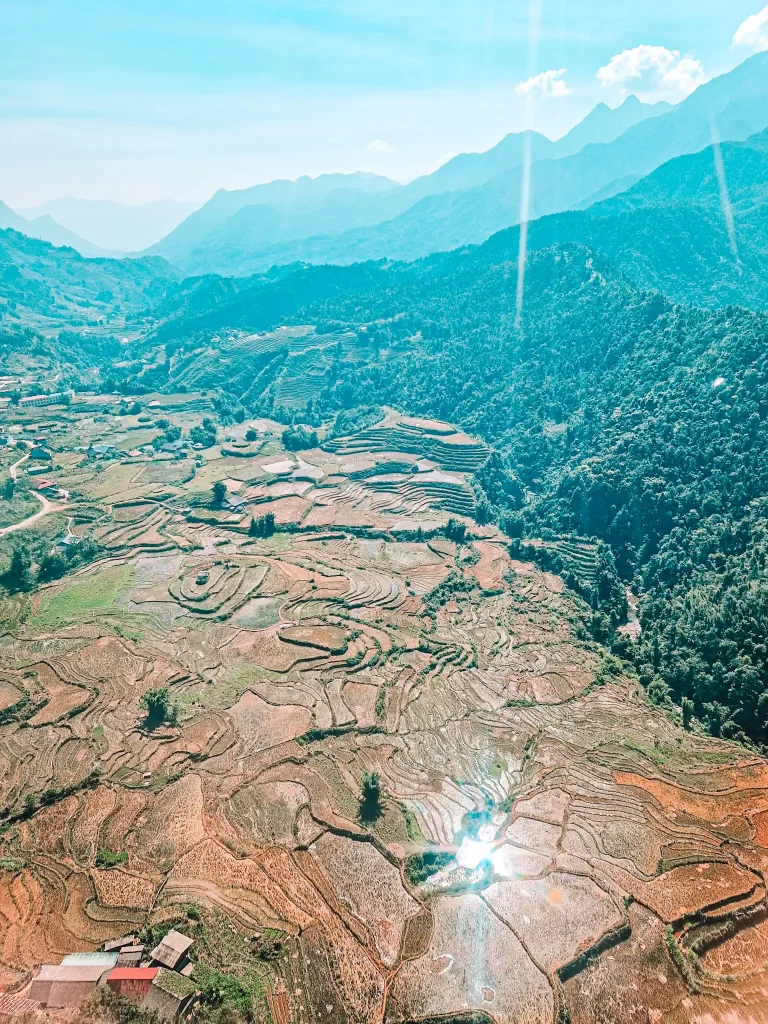
The history of Mount Fansipan
While the mountain itself was formed an astounding 250 million years ago, the cable cars, temples, and statues are significantly more modern.
When I first visited Vietnam in 2010, only hardcore trekkers went to Sapa, where the only way to reach the summit of Mount Fansipan was a multi-day trek. Since then, the incredible cable car – the longest in the world – has been built, with construction starting in 2013. It was somehow finished in just 800 days – I can’t even begin to imagine the work required to achieve this!
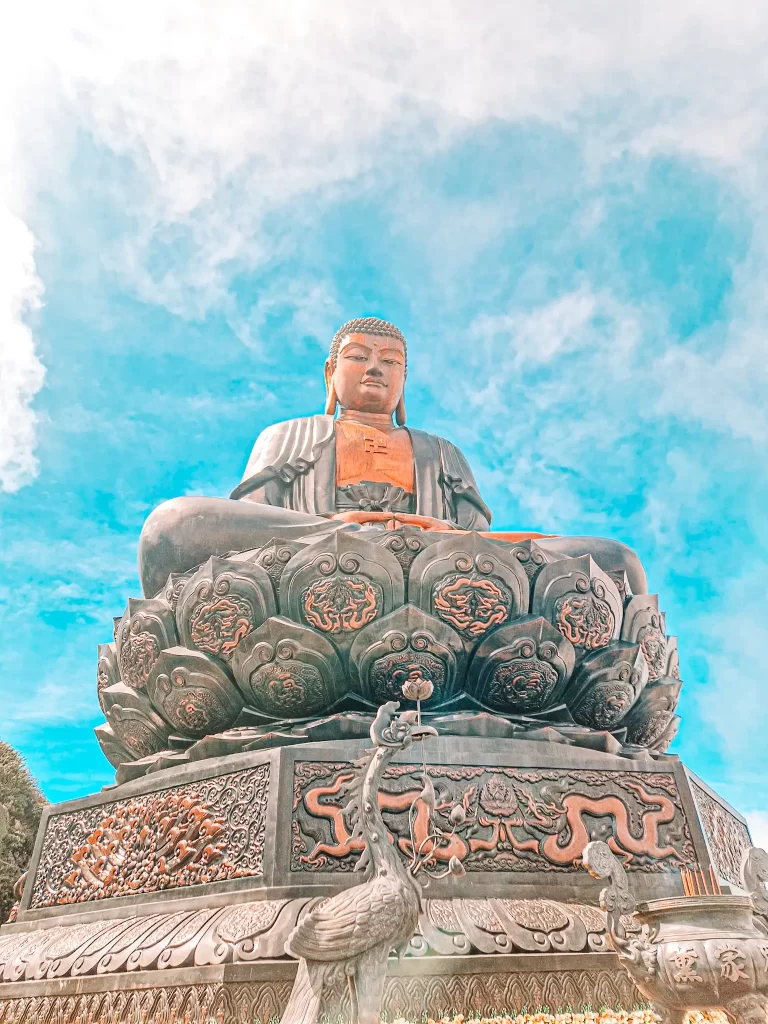
Development of the site also turned Mount Fansipan into a major spiritual destination for Vietnamese Buddhists. The ‘Roof of Indochina’, which also has the name ‘the tottering giant rock’ in the local language, now features the biggest giant Buddha statue in Vietnam. This 21m tall bronze statue looms over the valleys near the cable car station. Further towards the summit, the beautiful 12m tall statue of Quan The Am (Goddess of Compassion) stands out against the greenery, reminiscent of the beautiful Lady Buddha near Hoi An and Da Nang. The summit also features a number of pagodas and a monastery.
When is the best time to visit Mount Fansipan
The best time of day to visit Mount Fansipan
Unlike Mount Bromo, where sunrise trips are essential, visiting Mount Fansipan is more flexible. However, I still recommend starting your day early to make the most of your visit:
- An early start will help you to avoid crowds that arrive later in the morning and into the afternoon
- While I was in Sapa in autumn 2024, it often clouded over during the afternoons, which would impede those stunning summit views
- It can be a long trip, so starting early gives you a chance to do something else later in the day.
However, many people visit Mount Fansipan for sunset. This allows you to witness the sun setting over the surrounding mountains. If you’re going for this option, remember to get to the cable car station for the last cable car (5.30pm on weekdays and 6pm on weekends). To avoid slipping on the stairs at dusk, consider taking the funicular train from the summit back down to the cable car station.
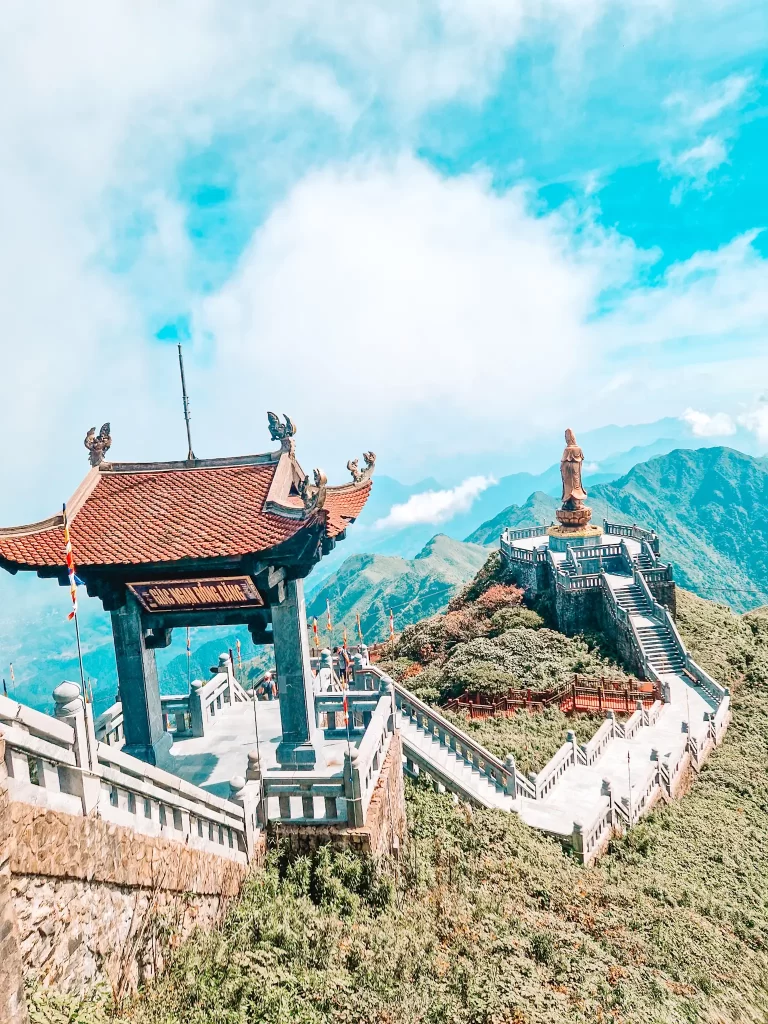
Ultimately, the best time to visit Mount Fansipan depends on your schedule in Sapa and how you arrive. For example, if you take the overnight sleeper train, you could head straight to the summit upon arrival. Alternatively, you could explore Sapa first and visit Mount Fansipan in the afternoon before taking a sleeper bus or train back to Hanoi.
The best time of year to visit Mount Fansipan
Like Ninh Binh, this part of northern Vietnam has distinct seasons. Weather can strongly vary in Sapa at different times of the year, and this is even more true at the summit of Mount Fansipan. Temperatures are likely to be significantly lower than in Sapa town, which in itself is likely to be cooler than Hanoi or Hoi An.
- Autumn (September-November), when I visited, was warm during the day but significantly cooler first thing in the morning. I didn’t experience rain, but this period is typhoon season in Vietnam, so you should monitor the weather forecast.
- Winter (December and January) can see actual cold temperatures, occasional snow, and frequent rain. It’s also likely to be misty, impeding your views from the summit.
- Spring (February- May) has temperatures between 10c-20c. Flowers and greenery bloom during this season, making the area particularly beautiful.
- Summer (June to August) has temperatures over 20c. You can expect a high of around 24c, which is a bit hot for the walking at the summit. There is also a high likelihood of rain, particularly in the afternoons, which might make it harder to visit Mount Fansipan.
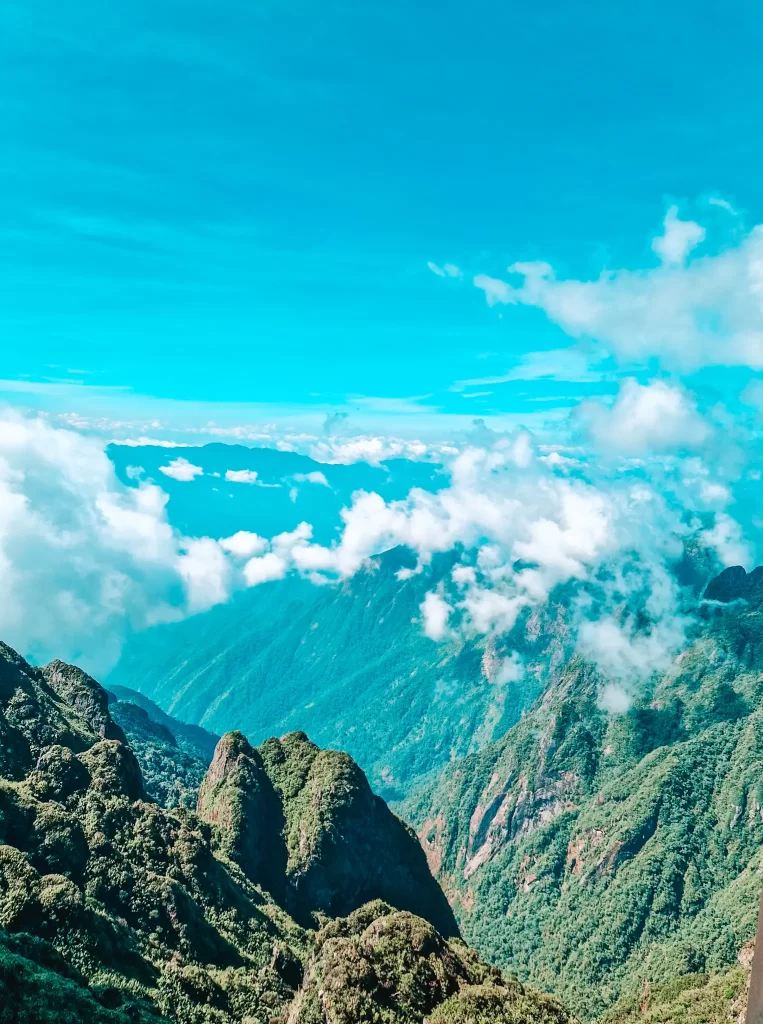
How to visit Mount Fansipan
Now that you know that Mount Fansipan is worth visiting, it’s time to start planning your journey.
Many people trek to the summit of Mount Fansipan, but this isn’t the right option for me. I’m not a hiker, and trekking tours are often very expensive for solo travellers.
However, if this is something you want to do, you will need a guided trek. You should carefully consider the time of year you plan to visit (see the section below) to give you the right weather conditions for the trek. This website has a detailed guide to the different Mount Fansipan trekking routes, while this guide has specific detail from a hiker.
The best way to visit Mount Fansipan for me was to use the cable car! While this is a major Vietnamese tourist site, run by Sunworld, who also run the Bana Hills Park near Da Nang, it very much feels like useful planning information is scarce. For example, I found that ticketing options were unclear and there wasn’t much information on what to expect at the summit!
There are other things to consider like weather and appropriate clothing. As I couldn’t find all this information when I was planning my own trip, I’ve created this comprehensive guide so know how to visit Mount Fansipan!
How to get to Fansipan
There are three main steps to the journey: the initial train, the cable car, and the final funicular train (or walk):
- Train – you take the train from central Sapa to the main Sunworld Fansipan hub. If you don’t want to take the train – for example, if you’re not staying in central Sapa – you can take a taxi or rent a motorbike to get to the entrance to the Sunworld Complex
- Tourist ethnic village – once you arrive by train (or taxi), you walk up a hill and through a very touristy ethnic village. If you want to spend time in the village, do so on the way up. You won’t see it again on the way back. On the other side of this village, you’ll reach the cable car station.
- Mount Fansipan Cable car – you’ll join a queue in the enormous cable car hall. Even though this only felt about a quarter full when I visited, I waited about half an hour. It was certainly worth it, with one of the longest and highest cable car journeys in the world as my reward.
- Funicular – Once you’re swept up to the mountain itself, you can choose to take another small Funicular to the top, or climb 600 steps to reach the summit. If you walk (either up or down), you’ll pass the temples and statues, all of which are stunning. While this isn’t as spectacular as the funicular on Penang Hill in Malaysia, it’s still well worth the experience. I then recommend walking down (not up!) to see these incredible feats of engineering.
- Summit – You’ll finally reach the summit of Mount Fansipan. There’s plenty of space up here for the inevitable selfies, pictures of the view and a lot of Vietnamese flags. It’s absolutely stunning.
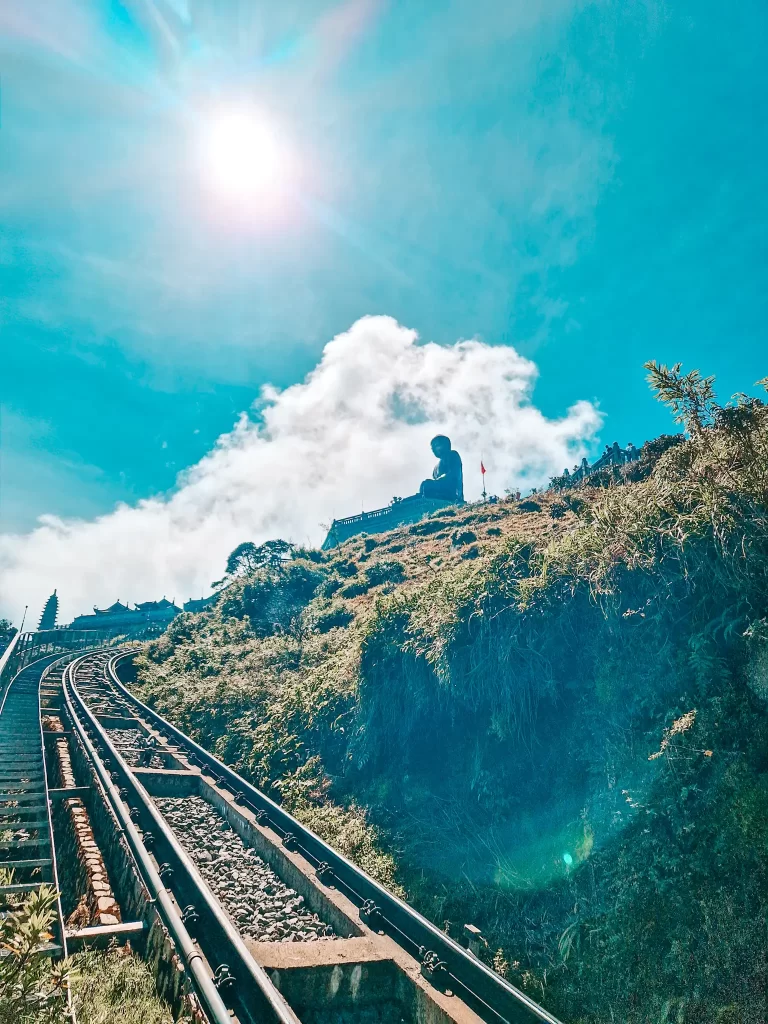
Mount Fansipan Cable Car ticket options
- 850k VND Cable Car
- 150k VND Funicular one way
- 180k VND for train
Tickets are bought in person at the ticketing desk in central Sapa. You buy your Mount Fansipan Cable Car tickets and then depart from the bright yellow Hotel de la Coupole – you can’t miss the building. You can buy your tickets on the day.
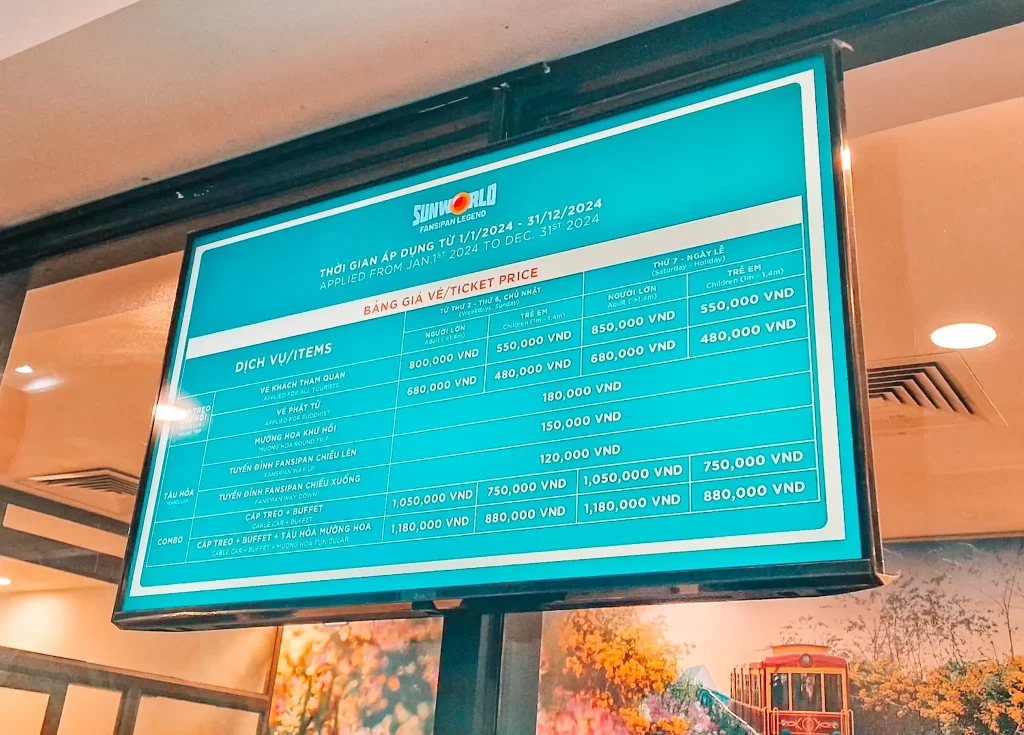
Note that tickets on Viator or Getyourguide are offering a car transfer to the cable car, rather than taking the train. For me, this isn’t worth the extra cost unless your hotel is very far away from the Hotel de la Coupole. The train itself is a lovely little ride, and not particularly expensive.
Despite English information and staff with excellent English, I found the ticketing very confusing. Even looking back on it now, I struggle to make sense of the way it’s presented. The distinction between the two trains – the initial ride to the cable car station, and then the funicular at the top – is not presented clearly. However, I’ve laid it out more clearly below to help you! Options include:
- Mount Fansipan Cable car only (note that you will need to organise a taxi or other transport to the cable car station)
- Train + Cable car
- Train + Cable car + 1 way Funicular – recommended
- Train + cable car + 2 way Funicular.
I went for the option with one-way Funicular and walked down from the summit to the Mount Fansipan Cable Car station. I was advised to do this by the helpful lady at the ticket office – she also told me that you can buy a return funicular ticket at the top if you take a look at those 600 steps and decide your knees can’t cope with walking down.
Make sure that you hold on to all your paper tickets as you’ll need them to access the various stages of the journey (and even get out of the complex at the end).
Should you take the funicular or walk up the steps?
There are over 600 steps between the cable car station and the summit. Given that the 250+ steps at the Batu Caves in Malaysia is a struggle for many people, I strongly suggest taking the Funicular up and walking down the steps, because:
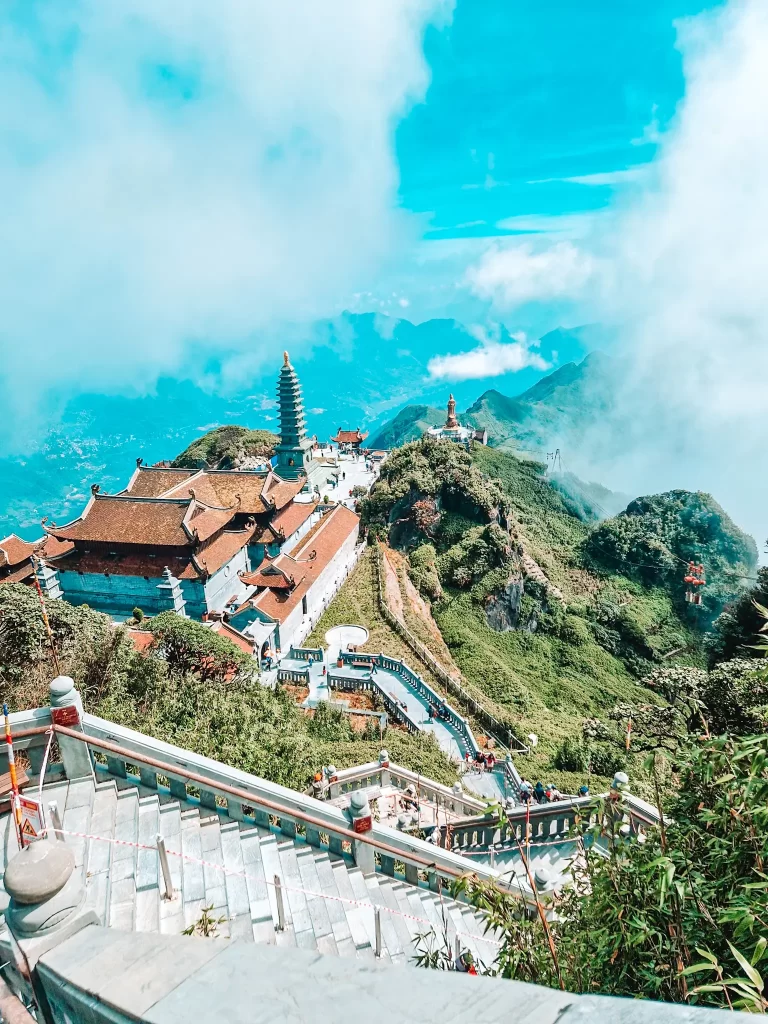
- 600 steps is a lot! Don’t underestimate how long this will take or how much effort it will be, even if you’re fit.
- You’ll get to see the temples and statues on the way down, and these are definitely worth visiting.
- The steps are not even spaced, they are often narrow, and when it’s misty or raining they get slippery. There are signs throughout the complex warning visitors to be careful. Only doing the steps one way reduces the risk of falling.
- There are still plenty of steps up (for example to the statue platforms) on the way to get your heart rate up!
Food, drink, and other practicalities
Visiting Mount Fansipan takes at least half a day, so it’s good to know what your food options are. The site has been set up by Sunworld, who also run a number of other attractions across Vietnam. It is essentially a theme park company, and it has all the same amenities.
The main restaurants are at the cable car station at the summit, with two options on different floors. There’s also a cafe near the summit area, offering lighter bites. Throughout the complex there are snack carts offering e.g. popcorn. There was also a restaurant at the bottom cable car station, which offers a buffet option that can be bought as part of certain tickets.
There are toilet facilities throughout the complex.
What to wear to Mount Fansiapn
Mount Fansipan can be cold, especially if you’re going in the early morning. Use this weather guide to check the weather at the summit and follow these tips on how to visit Mount Fansipan:
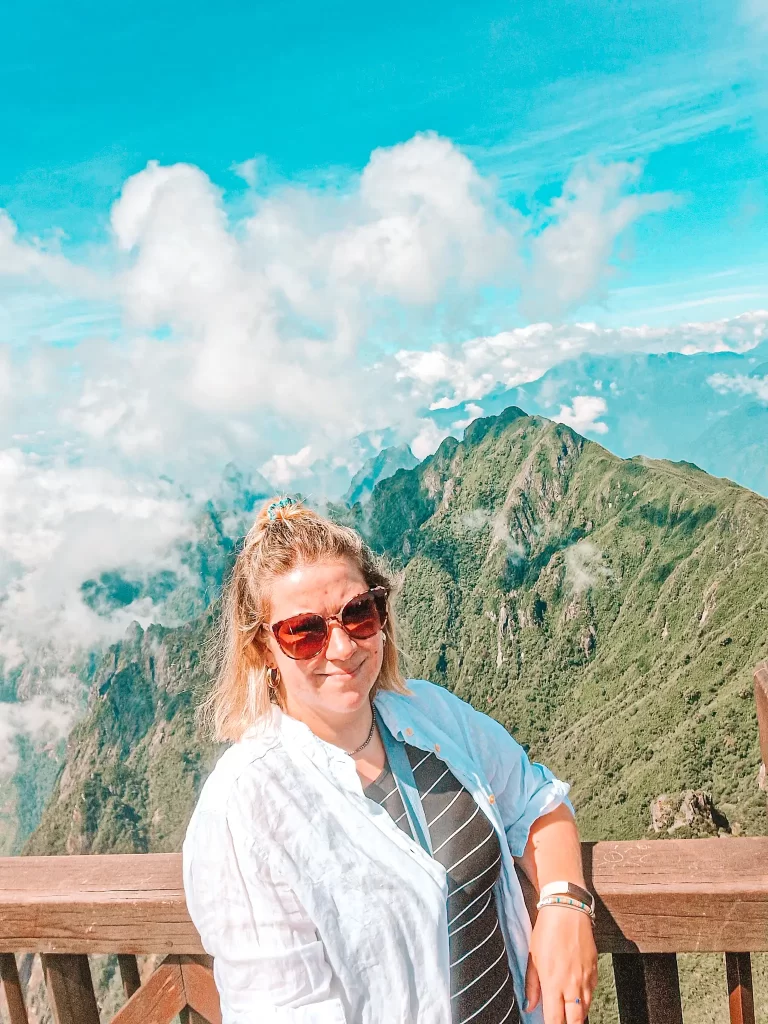
- Bring layers – while it was initially chilly, I got hot walking around the summit area
- Consider bringing a waterproof – the weather can change quickly on the mountain.
- Wear good shoes. Walking sandals are fine but I wouldn’t recommend flip flops or anything with a smooth sole, as the steps are uneven and slippery.
- Bring a cover up. Much of Fansipan is a sacred space and you should make sure you dress respectfully for the temples.
Visiting Mount Fansipan is an unforgettable experience, offering both adventure and cultural discovery. Whether you take the funicular to the summit or challenge yourself with the 600 steps, the journey is as rewarding as the destination. With stunning panoramic views, intricate temples, and the awe-inspiring Buddha statue, Fansipan is more than just a mountain—it’s a place of wonder. Now that you know how to visit Mount Fansipan with ease, all that’s left to do is plan your trip and experience this incredible destination for yourself.


